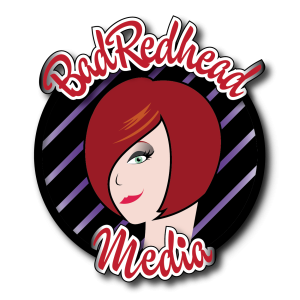What IS a Target Audience? What You Need to Know by @K8Tilton
Jerry Gentry asked, “How do you get a handle on your target audience? Not what you think it is, but what it is in reality? Is it people who leave reviews, follow you blog, send you million dollar checks?” Good question, Jerry. Let’s first take a look at what a target audience IS.
Dictionary.com defines “target audience” as “the intended group for which something is performed or marketed; the specific group to which advertising is directed.” In other words, your target audience is the people you market your book to.
Simple, right?
But, let’s answer the real question here. How do we get our target audience (those we are marketing to), to become our actual audience, the ones who buy what we are marketing to them?
Step One: DO YOUR RESEARCH
I’ve said this before and I’ll say it again. Before you start throwing out tweets and emails and shell out money for advertising, sit down and do some research. Going out into the world with a target audience that looks something like this: “Everyone age 15 to 99” is bound to leave you very disappointed in the end.. Although you may have a book that could be enjoyed by people from 15 to 99 years old, by narrowing your target audience you will have a stronger message, better results, and an easier time marketing overall.
Start with the basics: location, age, gender, education, profession, income, group affiliation, hobbies.
Narrow these as much as possible (no age range from 15 to 99). The closer you can get to defining a single type of person, aka buyer persona, the easier it will be for you to know:
- Where to do you marketing (online/offline, social media, email, blogging, live events, etc.)
- How to talk to your audience (isn’t it easier to speak to someone you know well than a room full of strangers?)
- What your audience wants (so you can provide it and make an income in the process).
See how lovely that is?
Step Two: SERVE YOUR TARGET AUDIENCE
Once you have a clear idea of who your target audience is, you are likely to become more aware of their problems, needs, and wants. Your job is to create the product and content to fill those areas. If you have a solid, narrow target audience, this should be a clear task and once fulfilled, you’ll reap the benefits.
Think of it this way: as an author your target audience is a reader of books. Let’s say your reader is a business professional looking to learn how to better promote their business on Twitter. So what do you provide them with? A book on cats? No (although who doesn’t like cats?); you provide them with a guide to Twitter for businesspeople. You’ll likely also attract this reader by providing free content on the same subject matter (Twitter) on your blog and Twitter channel. Simple.
Step Three: REACH YOUR TARGET AUDIENCE
Now that you have a clear and narrow target audience in mind, and are providing information of value for this audience, you need to get noticed. This is one of the tricker aspects of marketing but it is something we cover extensively here on BadRedHead Media. In a previous article, I shared a list of some of the numerous articles we’ve created to teach you how to market. I’ll repost it below in case you missed it.
- Connect with Your Readers – How Authors Can Use Instagram by @K8Tilton
- How to Find Your Audience Online by @nblackburn01
- The Reason Authors Must Be Genuine on Social Media by @K8Tilton
- The 4 Most Effective Book Marketing Strategies That Work
- Easy Pinterest Growth Tips for Authors by @K8Tilton
- YouTube, Your Book Trailer and You! by @nblackburn01
- Video Blogging: Vlogging for Authors by @K8Tilton
And here are a few quick tips to get you started:
- On Twitter, look at the accounts of authors who write books similar to yours. Click on the number under “Followers” to browse the accounts of those who follow these authors. See any readers? Follow them.
- Use ManageFlitter to search for accounts with keywords relevant to your target audience (i.e., “reader”).
- Browse for book bloggers who review books in your genre by searching book blogger directories. Use this list of book blogger directories to get started on your search.
- Follow these book bloggers on Instagram.
Step Four: REAP THE BENEFITS
When you have a clear image of a narrow target audience in your mind and you are actively providing them with value (with your books, services, content, social media, etc), your target audience will become your audience. These people you are trying to reach and connect with will become those who buy your books, comment on your blog, and hey, maybe even cut you that million dollar check (it could happen!).
The trick of this all is doing the hard work. Your efforts will not convert into sales overnight. For my business, it took three years to build some real traction with my target audience (authors) and now, almost five years into this endeavor, I can see how the countless hours I’ve spent blogging, posting on social media, guest blogging, etc., have contributed to the success I have now. I can also tell you that the work isn’t done. Now that I have an audience, I must strive to continue to serve them and give them value.
So, don’t give up when the sales are slow at the start. Keep working to improve your understanding of those readers you want to reach, and strive to offer them something they will cherish, enjoy, learn from.
Trust me, you’ve got this! And we are here to help. Rachel offers numerous services you can find here from marketing consultations to social media management. And I’ve been know to offer a few social media training consultations too.
Photos courtesy of pixabay.
[blurbit]



Thanks so much for sharing this. I like your suggestions.
I’ve been practicing this ever since I started blogging and using social medias, not two years ago, and it’s nice hearing that slowly, it will work. It is working, actually 🙂
Finding your target audience isn’t as easy as one would think. When I started out, I thought I knew who my audience was – then I discovered my idea was too vague to work.
But this is what I learn: if you share what you love, your audiece will reveal to you. As I kept sharing my content and commenting on blogs I like, people started coming to my blog and (slowly, ever so slowly) I started seeing what they enjoyed the most… which is something I too enjoy.
So over time, they would let me know what they like and I’d kept give them what they appreciate the most, and so my idea of my audience became more specific.
It’s kind of a strange process, really… well, strange, because you don’t expect it to work this way. But it does, at least for me 🙂
Yes, you can learn a lot about your audience as you go. For authors, you can get a much better picture before you start with some research, though! I always encourage the authors I work with to consider their number one reader. You can often narrow down a lot with some thought and research and then continue to narrow down and polish your target market as you learn more. It makes it much easier as you progress. 🙂
Hi Jazz and thanks for sharing. I agree, it’s an odd process. Selling and marketing are not a natural process — it’s forced to an extent. We pull together this and that, hoping to fit pieces into a box that may not go together. It’s uncomfortable, it doesn’t feel right.
Commenting on others’ blogs is an excellent way to interact with folks — who doesn’t love comments? I also find that interacting on social media serves the same purpose. If people are interested, they’ll check our links and bios. We know how this stuff works.
thanks again for sharing.